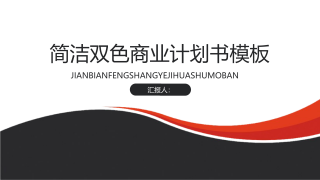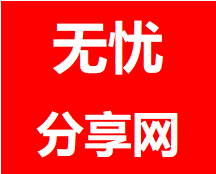浙江省民生支出对城乡居民收入分配影响的研究
VIP免费
浙江财经学院硕士学位论文
I
摘 要
近年来,我国现代化建设取得了巨大的成绩,城乡居民收入也得到快速提
高,但是也必须清醒看到,经济社会发展过程中暴露出经济结构不合理,城市发
展过快,农村基础设施薄弱等问题,尤其是城乡居民的收入差距呈现出扩大趋
势。浙江省经济位于全国前列,但也同样存在城乡收入差距扩大的现象。我们常
常看见有人在炫耀自己的豪华房、车,有人在过度地浪费金钱,也有人在天桥下
乞讨为生,更有人却因为无力承担医药费用而长年卧病在床。如果说适当的收入
差距可以提高劳动生产率,刺激经济发展,那么过大的收入差距就会对经济发
展、社会和谐稳定造成极大的伤害。
政府公共支出具有资源配置、调节收入分配和稳定经济增长的三大职能。政
府公共支出的收入分配职能的理论目标就是通过禀赋和产品在社会成员之间的分
配,缩小社会成员间的收入差距,最终使得整个经济达到社会福利最大化的水
平。
《中华人民共和国国民经济和社会发展第十二个五年规划纲要》中明确提出
“使全体人民学有所教、病有所医、老有所养、住有所居”十六字方针,使得教
育、医疗、社会保障和就业、住房等社会事业的发展越来越受到重视,也更加体
现地方政府正在着力保障和改善民生,缩小城乡居民差距。正如 2009 年全国推
广的家电下乡政策,政府对具有农村户口的居民购买指定家电直接进行补贴,补
贴率为家电销售价格的 13%,实际上补贴的资金来源于税收收入,补贴对象则是
农民,因此该项政策改变了收入分配的格局,形成了全体纳税人向受补贴的农民
的收入转移,这正是公共支出的收入分配职能的体现。
在上述背景下,本文基于地方政府的视角,研究民生支出对于缩小城乡收入
差距的影响效应。在民生支出的范畴中,本文主要研究教育、医疗和社会保障和
就业这三方面的支出。众所周知,这三方面支出直接关系了人们的福利水平,且
由于教育、医疗和社会保障都是具有很强的外溢性和公益性的公共服务或产品,
都需要政府来提供。具体研究思路和主要结论如下:
第一部分是综诉。在这个部分中,本文系统地整理国内外学者研究公共支出
和城乡居民收入差距的主要成果,包括公共支出结构、收入差距产生原因和变化
趋势等,归纳了国内学者研究的大致方向和内容。同时归纳总结得出国内外的研
究成果中存在着两个研究不足,并深入地、有针对性地对民生支出对收入分配差
距的影响进行分析,使其成为本论文的重点。
第二部分是本论文的基础理论部分。作者比较系统地界定民生支出和收入分
配的相关概念,介绍相关理论。包括收入分配理论、公共支出的收入分配效应和
公共服务均等化。这些理论是非常适用于民生支出对城乡居民收入分配差距的影
浙江财经学院硕士学位论文
II
响的分析,因而这个也坚定了作者运用这些理论来阐释浙江省的民生支出对城乡
居民收入差距影响研究的信心,为更好地展开本论文的叙述提供了很好的理论支
撑。
第三部分主要是第三章和第四章。在上文的理论基础上,作者收集大量的数
据,系统地对浙江省城乡居民收入差距的走势进行了描述性分析,介绍了浙江省
民生支出的基本概况,进而也分析浙江省城乡居民收入差距形成的原因。第四章
采用 1999-2010 年浙江省 56 个县级面板数据,实证分析民生支出对缩小城乡收
入差距的影响效应。研究结果表明:不同的民生支出对城乡收入差距的影响是有
差异的,教育支出显著拉大城乡居民收入差距,而医疗卫生支出和社会保障支出
能够缩小城乡居民收入差距。两章内容分别从横向、纵向的两个层面,运用不同
的数学统计方法,分析了浙江省民生支出对城乡居民收入分配的影响,最终得出
浙江省的教育、社会保障和就业、医疗卫生支出都对城乡居民收入差距产生一定
程度的影响。
第四部分基于上述分析对浙江省政府民生支出、城乡居民收入差距等提出具
有针对性、可行性的政策建议。包括发挥政府在收入分配中的职能和作用、增加
教育支出、完善社会保障体系和实现医疗卫生服务均等化水平。这些政策能够弥
补现实中浙江省教育、社会保障和就业、医疗卫生服务公共支出的不足,从而能
够在一定程度上缩小城乡居民收入差距,提高人们的整体生活水平。
关键词:民生支出;收入分配;城乡差距;浙江
浙江财经学院硕士学位论文
III
ABSTRACT
With the reform and opening up and development of market economy, the
modernization of the new historical is standing at new point, the urban and rural
residents' income has increased rapidly. However, economic and social developments
have exposed some problems, especially income gap between urban and rural residents'
expanding. Although Zhejiang province, located in the economic front, the income gap
between urban and rural has expanded.
In daily life, we often see some people are flaunting its luxury house or car, some
people are wasting of money, while others are under begging, someone can’t afford
medical costs so that they are ill in bed. If appropriate income disparity may be put up
labors’ productivity, stimulating economic growth, the excessive income gap will have
great harm on economic development, social harmony and stability.
Public expenditure has three functions. There are resource allocations, regulating
income distribution and stable economic growth .The government goal of income
distribution functions is to distribute by endowment and product in the community of
the members to narrow the income gap and eventually make the maximize the economic
and social welfare.
The people's republic of china on national economic and social development of the
twelfth five years of planning program proposed “Everyone has a chance to receive
education, medical, social security and employment, house”. It makes education,
medical, social security and employment, housing and other social undertakings
improve more and more attention and the local government put more aware of to protect
and improve people's livelihood, narrowing the gap in urban and rural residents. As
2009 the promotion of appliances goes to the countryside, the government's policy of
the inhabitants of rural households to buy the specified requirements for subsidies direct.
And subsidies for household electrical appliances is selling price of 13%. In fact,
subsidies stem from tax receipts, subsidies object is inhabitants of rural households, so
the policy has changed the pattern of income distribution, the taxpayers are subsidies to
farmers' income from public spending, and this is the income distribution function.
In the background of this article, the paper analyzes the relationship between the
livelihood of government expenditure and income distribution. Concrete research way
of thinking and the main conclusion as follows :
The first part is the comprehensive. In this section, studies the main outcomes of
浙江财经学院硕士学位论文
IV
public expenditure and income gap in urban and rural residents by home and abroad
scholars, including public expenditure structure, the income gap between cause and
trends, with a summary of the scholars studying the general directions and contents.
Through scholars’ research, the author verifies the roughly direction and content. At the
same time, summarized the research achievements at home and abroad have existed in
the two studies, and deeply, targeted to the people's livelihood expenditure on income
distribution gap impact analysis, make it become the focus of this paper.
The second part is the basic theory in the paper. The author systematically defining
the people's livelihood expenditure and income distribution of related concepts also
introduces the theory, including income distribution theory, public expenditure of the
effects of income distribution and equalization of basic public service. These theories
are applied to elaborate people's livelihood expenditure of urban and rural residents
income distribution gap, also sturdy confidence of author to apply these theories to
explain the influence of the Zhejiang province people's livelihood expenditure on
income gap between urban and rural residents, in order to better this paper described
provides a good theoretical support.
The third part is the third chapter and the fourth chapter. On the basis of the theory
above, the author collects a large amount of data, thoroughly provides in Zhejiang
province country residents the trend of the income margin carried on a description
analysis, introduced the basic survey based on the livelihood of the people spending,
also analyzed the income gap in urban and rural residents in Zhejiang province. The
fourth chapter analyzes the relationship between the livelihood of government
expenditure and income distribution based on relative data from 1999 to 2010 in
Zhejiang province. According to findings, the results of the study show that the effects
vary among different spending Education spending has substantially widened income
gap while medical health spending and social security spending can reduce income gap.
The two chapter separately from horizontal, vertical levels, using different mathematical
statistical method, analyzed Zhejiang to save the expenditure of urban and rural income
distribution effects, ultimately come to the education, employment, social security and
health care expenditure in narrowing the income gap between urban and rural residents
have a certain degree of influence.
The fourth part analyzes the relationship between the livelihood of government
expenditure and income distribution based on relative data from 1999 to 2010 in
Zhejiang province. According to findings, the results of the study show that the effects
vary among different spending Education spending has substantially widened income
gap while medical health spending and social security spending can reduce income gap.
The fourth part puts forward some recommendations based on the above analysis of the
浙江财经学院硕士学位论文
V
livelihood of the people spending、urban and rural residents' income gap and so on.
Including the role of the government in the income distribution of function and role,
spending more on education, perfecting social security system and realize the equality
in health service level. These policies can make up the reality in Zhejiang province
education, social security and employment, medical and health service expenditure is
insufficient, which to a certain extent in narrowing the income gap between urban and
rural residents, improve people's whole life level. Including the role and the function of
the government in the income distribution, spending more on education, perfecting
social security system and realize the equality in health service level. To compensate for
the education, social security and employment, medical and health service expenditure
is insufficient in Zhejiang province, which to a certain extent in the narrowing of
income gap between urban and rural residents, improve people's whole life level.
Key words: the livelihood of the people spending; income distribution; the gap
between urban and rural areas; ZheJiang
浙江财经学院硕士学位论文
VI
目录
第一章 引 言....................................................................................................................1
第一节 论文研究背景及选题意义····································································· 1
第二节 国内外研究现状 ···················································································· 2
第三节 研究方法和基本思路 ············································································ 7
第四节 创新点及不足 ························································································ 8
第二章 居民收入分配的一般理论...............................................................................10
第一节 概念界定 ······························································································ 10
第二节 一般理论和作用分析 ·········································································· 11
第三章 浙江省居民收入分配差距和民生支出的基本概况.......................................15
第一节 浙江省城乡居民收入差距的变动和趋势 ··········································· 15
第二节 浙江省城乡收入差距形成的成因······················································· 17
第三节 浙江省民生投入的基本情况······························································· 21
第四章 民生支出和收入差距的实证性分析:基于县市面板数据...........................27
第一节 指标选择 ······························································································ 28
第二节 模型建立和变量选择 ·········································································· 28
第三节 实证检验和分析 ·················································································· 31
第五章 结论及政策建议...............................................................................................38
第一节 结论······································································································ 38
第二节 政策建议 ······························································································ 38
参考文献.........................................................................................................................43
附 录...............................................................................................................................47
致谢.................................................................................................................................48
摘要:
展开>>
收起<<
浙江财经学院硕士学位论文I摘要近年来,我国现代化建设取得了巨大的成绩,城乡居民收入也得到快速提高,但是也必须清醒看到,经济社会发展过程中暴露出经济结构不合理,城市发展过快,农村基础设施薄弱等问题,尤其是城乡居民的收入差距呈现出扩大趋势。浙江省经济位于全国前列,但也同样存在城乡收入差距扩大的现象。我们常常看见有人在炫耀自己的豪华房、车,有人在过度地浪费金钱,也有人在天桥下乞讨为生,更有人却因为无力承担医药费用而长年卧病在床。如果说适当的收入差距可以提高劳动生产率,刺激经济发展,那么过大的收入差距就会对经济发展、社会和谐稳定造成极大的伤害。政府公共支出具有资源配置、调节收入分配和稳定经济增长的三大...
相关推荐
-
跨境电商商业计划书模版VIP免费
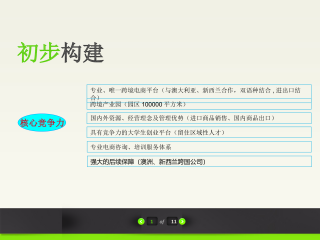
 2025-01-09 27
2025-01-09 27 -
跨境电商方案范文VIP免费
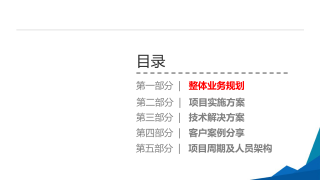
 2025-01-09 14
2025-01-09 14 -
创业计划书VIP免费
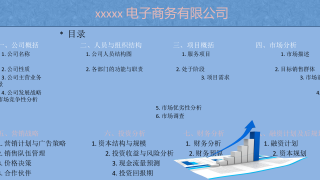
 2025-01-09 18
2025-01-09 18 -
xx生鲜APP计划书VIP免费

 2025-01-09 12
2025-01-09 12 -
跨境电商创业园商业计划书(盈利模式)VIP免费
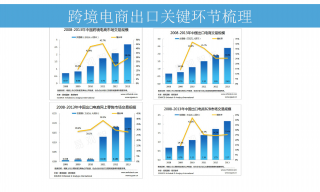
 2025-01-09 8
2025-01-09 8 -
跨境电商计划书VIP免费
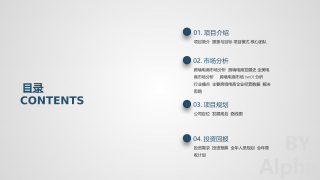
 2025-01-09 13
2025-01-09 13 -
绿色食品电商平台项目计划书VIP免费

 2025-01-09 22
2025-01-09 22 -
农产品电子商务商业计划书VIP免费
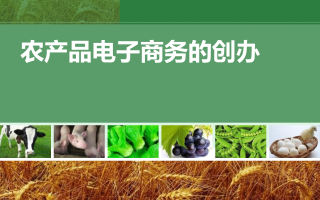
 2025-01-09 9
2025-01-09 9 -
农村电商平台商业计划书VIP免费

 2025-01-09 13
2025-01-09 13 -
生鲜商城平台商业计划书VIP免费
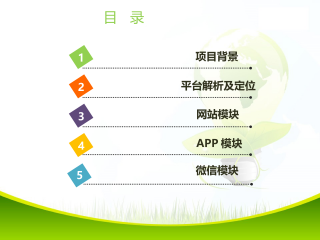
 2025-01-09 21
2025-01-09 21
作者:周伟光
分类:高等教育资料
价格:15积分
属性:52 页
大小:724.15KB
格式:PDF
时间:2024-09-30


